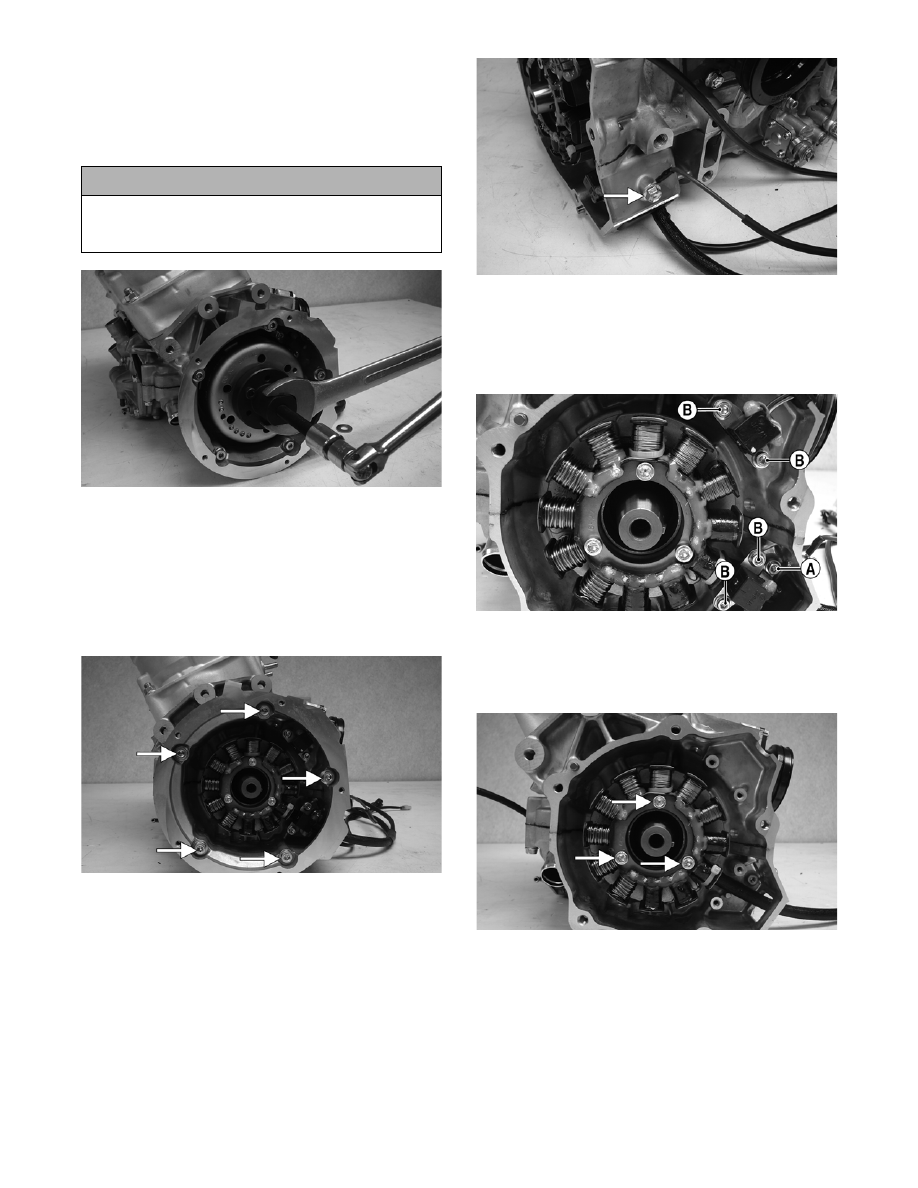Snowmobile Arctic Cat 2-Stroke (2007 year). Manual - part 42

2-154
3. Using Flywheel Puller (p/n 0744-040) or suitable
substitute, remove the flywheel from the crank-
shaft by tightening the puller bolt, striking the
head of the puller bolt with a hammer, and tighten-
ing again. Repeat this procedure until the flywheel
is free. Account for the key.
CM140
NOTE: To ensure the cleanliness of the flywheel
magnets, place the flywheel (with the magnets fac-
ing upward) on a clean bench.
NOTE: On the 1000 cc, remove the Allen-head
cap screws securing the magneto case to the
crankcase. Account for four alignment pins.
CM144A
4. Remove the cap screw securing the ground wire to
the crankcase.
CM142A
5. Remove the Allen-head cap screw (A) securing
the stator lead wire plate to the crankcase; then
remove the Allen-head cap screws (B) securing
the timing sensors, remove the sensors, and
account for the harness grommets.
CM141C
6. Remove the Allen-head cap screws securing the
stator to the stator plate. Route the stator lead wire
out of the crankcase; then remove the stator
assembly.
CM143A
7. Remove the cap screws securing the stator plate to
the engine; then remove the plate.
! CAUTION
To prevent damage to the crankshaft, do not thread
puller bolts more than 12.7 mm (1/2 in.) into the fly-
wheel. Damage to the coils may result.